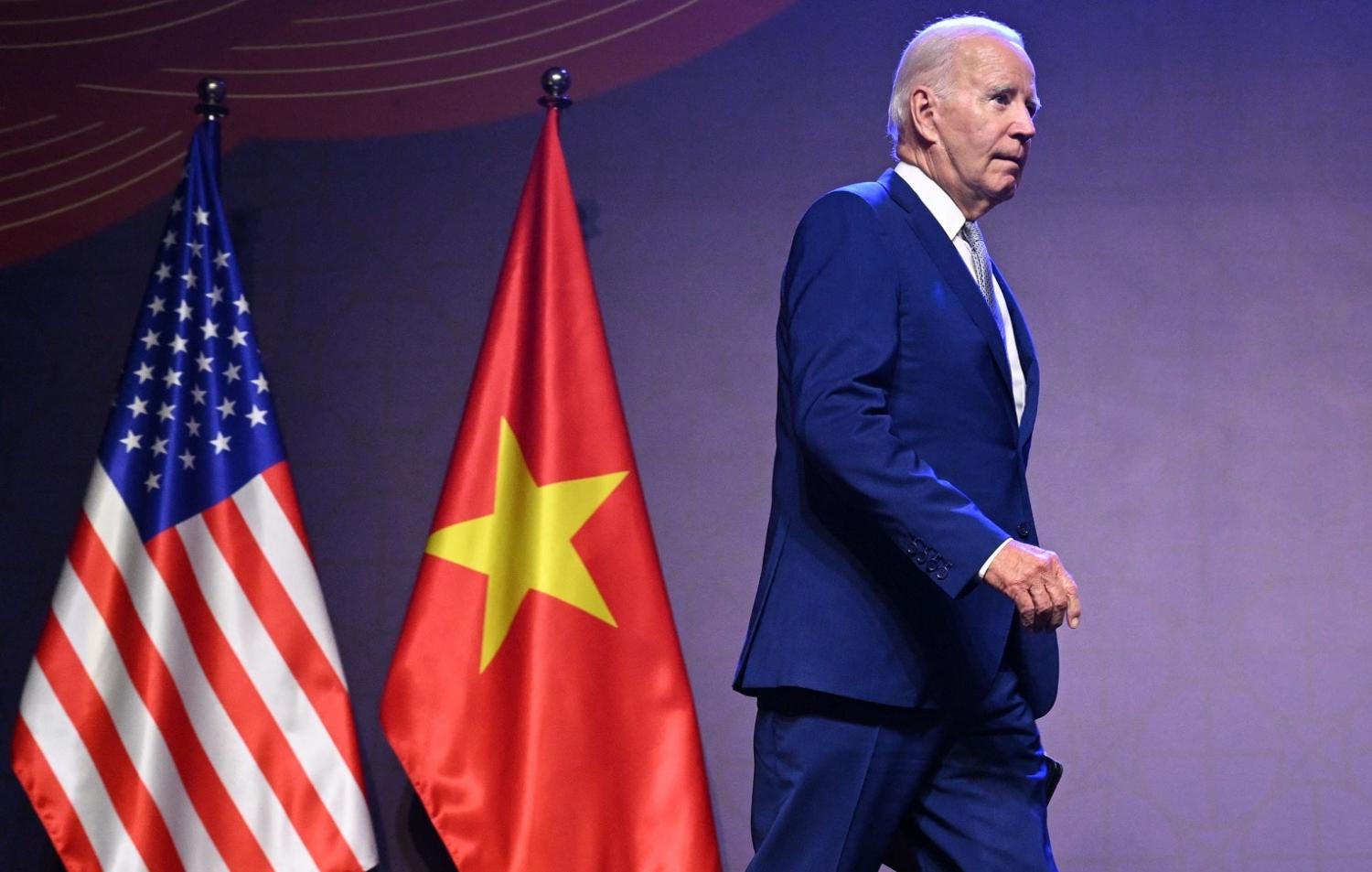This week, US President Joe Biden visited Vietnam as part of a trip “to strengthen alliances around the world to maintain stability”. One widely reported outcome is the announcement of a comprehensive strategic partnership between the United States and Vietnam, raising the relationship to the highest diplomatic level, which President Biden described as “the beginning of even a greater era of cooperation”.
(Footnote for the confused – in diplomatic parlance, levels go from comprehensive partnership through strategic partnership to comprehensive strategic partnership. What was notable was that the United States had previously just been a comprehensive partner, and has thus leapfrogged a level to the same status as China, India, Russia and South Korea.)
When I was in Vietnam a fortnight ago, Hanoi was awash with rumours of great power visits. With the Biden visit not confirmed, there was heated speculation on whether he would or wouldn’t come and, if he did, whether China’s President Xi Jinping would visit first to manage the Chinese response. Others noted the Vietnamese prime minister’s state visit to China in June as laying the ground for this change. It was an insight into how Vietnam carefully manages its relationships with great powers.
From Australia’s perspective, Vietnam’s elevation of ties with the United States is likely to assist Canberra’s attempt to upgrade its own ties from a strategic partnership to a comprehensive strategic partnership by the end of the year. This was expressed as a “shared ambition” after Prime Minister Anthony Albanese’s last visit and was raised again by the prime minister on the sidelines of the ASEAN Summit this week. It would be significant for Australia to be so elevated – and would show the potential of middle power cooperation.
My travel-mate in Hanoi, Lowy Institute Director of Research Hervé Lemahieu, had a wonderful metaphor to think about the role of countries such as Australia and Vietnam in a time of competition. He described that the usual way to think of the position of middle powers is as a tug of war – as if there were a cord between China and the United States, with all the Indo-Pacific powers aligning themselves closer to either the United States or China ends.

In his view, the better way to think of this is as a bow – where the cord linking the two superpowers can be pulled by middle powers, bringing the superpowers closer together. If successful, middle powers can potentially encourage greater convergence and cooperation. This includes not just guardrails on great power relations, but also on existential issues that threaten us all, including climate change, nuclear weapons and pandemics.
With this paradigm, it makes sense that, as well as managing great powers, Vietnam also has serious interest in working with powers such as Australia to shape the region. Out of Vietnam’s current strategic partnerships, more than half are with middle powers. This suggests that Vietnam is interested both in maintaining balance between major powers and in actively collaborating with other medium powers.
Australia is an excellent candidate for such middle power cooperation. Despite the evident differences in their political systems, Australia and Vietnam have patiently built up a strong relationship.
This year marks half a century since Gough Whitlam’s government recognised the government of Vietnam following the end of the war. Fifty years ago, it might have been fanciful to imagine a foreign minister from a country that had been at war talking about “strategic trust” between the two nations, let alone people-to-people links. But this is exactly what Foreign Minister Penny Wong did last month, at no less a venue than the Ho Chi Minh Academy, the heart of the Communist Party of Vietnam.
Use of language around “strategic trust” suggests that Australia and Vietnam believe their interests align and that they trust each other broadly to act in each other’s interests.
In my discussions with Vietnamese think tanks and academics during the visit, there was evident relief that Australia under the current government is now closer to the Vietnamese perspective. The messages Australia is sending about how it looks to contribute to “strategic equilibrium” – where no country dominates and countries can choose their own destinies – chimes well with Vietnamese views. This contrasts with the impression in recent years, that Australia has been potentially provoking greater conflict.
So whatever happens with Vietnam’s relations with China and the United States – whether President Xi pays a visit in response or not – a focus on middle power relations will remain important. Australia will have to wait and see if it achieves the same exalted relationship before the end of the fiftieth anniversary year.

